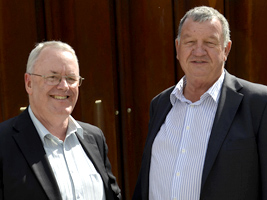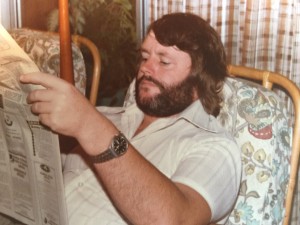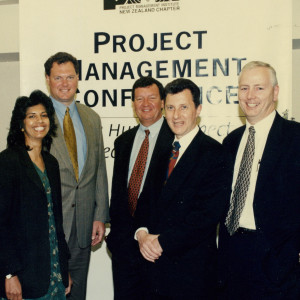
As the first in our Under the Hood series, we sat down with the Directors of RWA, Mike Hogg and Denis Parkinson, to discuss the series objectives. In addition, as veterans of the IT industry, we also explore their first hand industry insights, gained from over 40 years of experience each.
Why did you decide to create the Under the Hood series?
Mike: We believe the New Zealand IT sector is a fantastic industry to work in. That said, we regularly hear from people who are disheartened with their job, and as an industry we struggle to attract enough entry-level talent.

Batch Processing
The series will showcase the diverse range of people, roles and challenges that exist in our sector. We hope this will inspire readers to seek out their ideal role or company and also hope that we can do our part to attract new entrants into the sector.
Who will be featured in the series?
Denis: A wide range of industry professionals including: managers, technical experts and those from the business side of technology. Companies featured include non-IT centric internationals, global IT services companies, New Zealand start-ups and everything in-between. Participants will be featured using a range of different formats including video, interviews and webinars.
Although now recruiters, you both have IT backgrounds. Could you give us a short overview of your experience and how you ended up establishing a recruitment company 10 years ago?

Denis working hard in the 1980’s
Denis: I come from a programming background, in the days of batch processing using input from punched cards and paper tape on machines that didn’t have screens. I progressed through the traditional career path from systems analysis, development team management, and into IT management. This provided entry to the consulting field, where I took on successive roles as senior consultant, client manager, and managing and building a consulting business.
Mike: I was transitioned from a Draughtsman to one of our company’s first IT roles as a computer operator before moving into management and then finally to IT project management, a role I still perform for some of our Clients today.
Recruitment was a natural addition to our consulting business, because we had identified that there was a gap in the market for a recruitment business with extensive industry experience. We took the proactive decision to broaden our business offerings with the objective of filling this gap.
What inspired you to join the IT industry in the first place?
Denis: Although Mike and I were working in different countries we both started before there were formalised training programs. We were offered opportunities based on aptitude alone. The newness of the industry was very appealing, so we both jumped at the opportunity to be part of it.
Your careers have both been very different. What have been the favourite projects you have been personally involved with?
Denis: In the mid 1970’s I ran a small development team that built a complete new business IT system (the equivalent of an ERP today) for Foodstuffs Wellington. The project was unique and had very few existing case studies to work from. Whilst we managed the project very carefully, we spent most of the time delivering the work rather than worrying about project methodologies and this made it both enjoyable and ultimately very successful.
 Mike: Two projects stand out, one working on the IT systems for the NZ Commonwealth Games in 1990. The other was rolling out the first barcode system for Woolworths Australia. Both projects were extremely visible, had a broad stakeholder community and were crucial to ongoing business success. One of the main reasons I chose to become a Project Manager was the ability to work on such a diverse range of projects for a similarly diverse range of Clients.
Mike: Two projects stand out, one working on the IT systems for the NZ Commonwealth Games in 1990. The other was rolling out the first barcode system for Woolworths Australia. Both projects were extremely visible, had a broad stakeholder community and were crucial to ongoing business success. One of the main reasons I chose to become a Project Manager was the ability to work on such a diverse range of projects for a similarly diverse range of Clients.
What do you believe are the most interesting IT roles around today?
Denis: One of the great things about our industry is the speed at which new roles are created. Enterprise and Solution Architects are generally under-rated as a profession, but I believe they can deliver high value to the business.
Mike: In such a fast moving industry, I find “what’s next” to be the most interesting aspect. I mean, come on, who would have imagined we would have Data Philanthropists amongst us now?
What is the biggest on-going trend in the IT industry at the moment?
Denis: Cloud technology is not just having an impact on software but also infrastructure and the whole scope of IT management. The days of large on-site server rooms and in-house technicians are disappearing. Instead these services are being managed by third party service providers who manage external datacentres. Those who have previously performed these internal roles are transitioning to become more business focused or working for service providers.
For an industry professional, networking is crucial to career progression.

Mike at one of the first PMI meetings
What associations do you recommend people involve themselves with?
Mike: There are a number of formal professional associations that generally charge an annual fee and put on several conferences and events each year such as PMI or IITP. In addition to their networking value, these can be very helpful to keep up with on-going changes. Value can also be gained from some of the smaller, less formal events that are organised. We see lots of professionals getting together in Meetup groups associated with specific areas of interest, such as Java in Auckland.
Many IT professionals aspire to become leaders, either in their technical field or of people. What key traits do you see in those that already achieved success in these areas?
Denis: The ever present trait is the ability to be self-aware and humble. Many people manage to get to a certain level but find it hard to go further. This is because until you understand your strengths and weaknesses it is challenging to pick the right career path for your personality.
It is also helpful to find someone you respect who already works at a high level to act as a career mentor. When choosing, don’t limit your mentor options to people you know. Spend time researching the industry and bumping into new people at networking events.
Mike: These leaders have always been looking for the next step. Although committed to their current role, they have a career plan and are working towards their next objective and overall goals. They are also not afraid of taking on challenging projects or working for companies that aren’t perceived to be the “in places to work”.
As an industry, what do you think we can do better to present IT as a career option for young people?
Denis: The IT profession generally hasn’t been good at presenting the opportunities and jobs that exist in the IT industry to younger generations prior to them reaching university. There are a range of public and private sector initiatives underway at the moment to change this. In addition to the programmes and advocacy undertaken by IITP, two initiatives which we have been watching are Code Club and MindLab.
Mike: Technology is a fundamental part of every child’s experience in today’s society. I think the education system needs to embrace this new concept in thinking and learning.
Summary
Although the early parts of Mike and Denis’ careers weren’t planned, by remaining open to opportunities they have thoroughly enjoyed their careers. The industry continues to evolve with new jobs being created every year. To take advantage of this it is important to know your strengths and to keep an open mind when opportunities present themselves.

